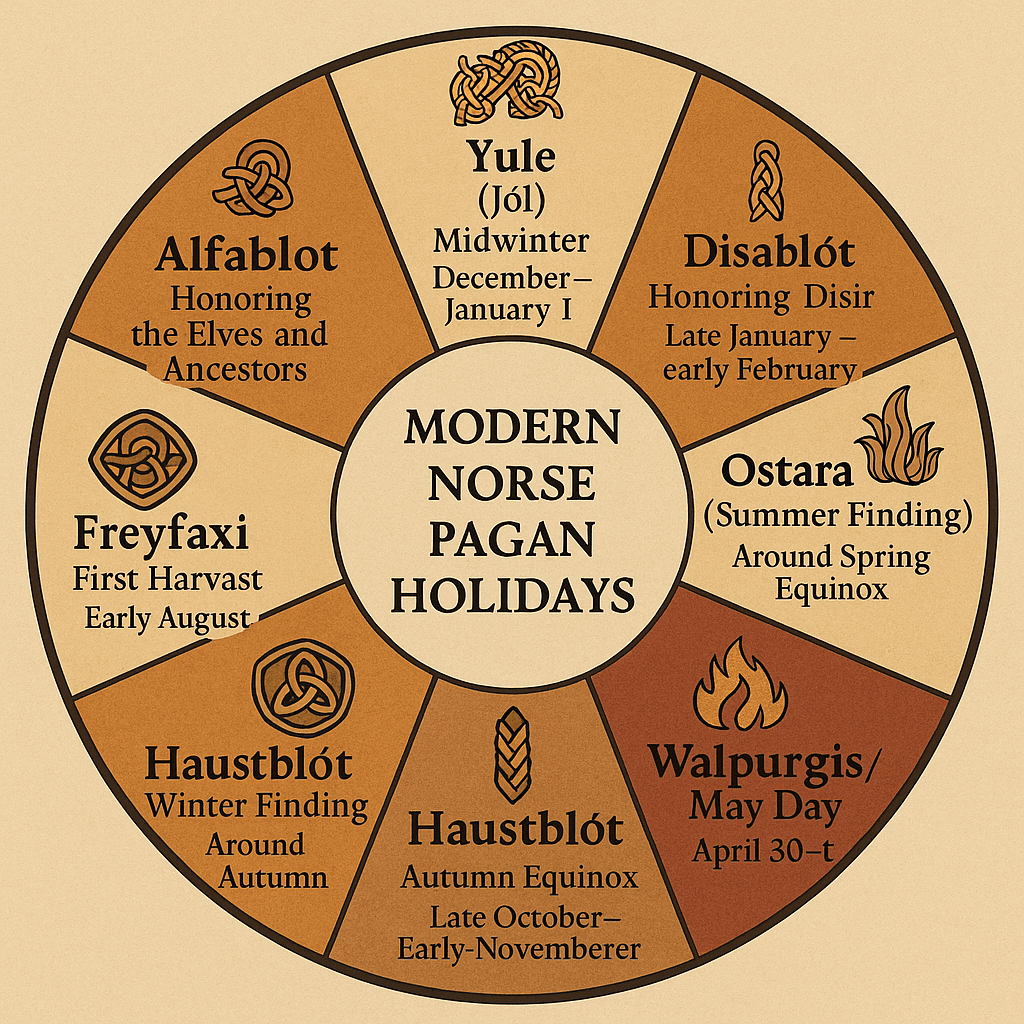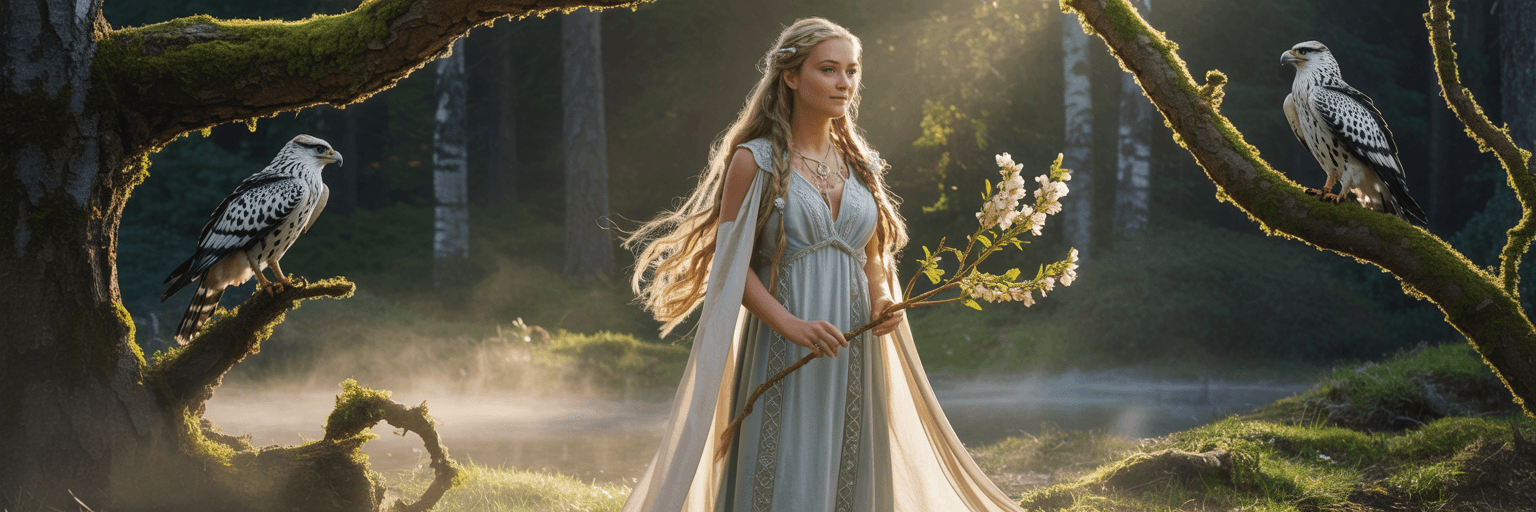Modern Norse Paganism is a living tradition, inspired by the beliefs and customs of the pre-Christian peoples of Scandinavia and the surrounding Norse world. While our ancient forebears did not leave us a single, unified calendar of holy days, modern practitioners often follow a reconstructed wheel of the year, blending historical sources, archaeological evidence, and modern spiritual practice.
The following is a commonly accepted framework — a set of eight main observances spread through the year — that many Heathens, Ásatrúar, and Norse Pagans choose to honor. Your own practice may adapt these dates to local seasons, personal meaning, or the traditions of your hearth or kindred.
1. Yule (Jól) — Midwinter
When: December 20th–January 1st (12 nights)
Focus: Renewal, remembrance, and honoring the powers in the darkest days.
Yule marks the rebirth of the sun after the longest night. Historically, it was a time of feasting, toasts (sumbel), and offerings to gods, ancestors, and landwights. The Wild Hunt was said to ride during this season, and fires were kept to welcome light’s return. Modern Yule often blends ancient customs with winter family traditions.
2. Dísablót — Honoring the Dísir
When: Late January to early February (varies)
Focus: Honoring the dísir — protective female ancestors and spirits.
Traditionally tied to Sweden and Iceland, Dísablót was both a private and public rite. Today, many use this time to recognize women of the family line, spiritual foremothers, and female figures of inspiration.
3. Ostara (Summer Finding)
When: Around the Spring Equinox (March 19–22)
Focus: Balance, fertility, and the turning toward summer.
The equinox celebrates light and dark in equal measure. For many modern Norse Pagans, it’s a time to honor deities connected with growth, new beginnings, and the fertility of the land — such as Freyr, Freyja, or the landwights.
4. Walpurgis / May Day (Vappu)
When: April 30th–May 1st
Focus: Protection, fire, and welcoming the fertile season.
While not strictly Norse in origin, fire festivals at this time of year are widespread in Northern Europe. Heathens often celebrate with bonfires, dancing, and rites to drive out ill luck and call in abundance.
5. Midsummer (Sólblót)
When: Around the Summer Solstice (June 20–22)
Focus: Sun’s power at its height, community, and blessings on the land.
The longest day honors the strength of the sun. In modern practice, this can be a joyous outdoor celebration — blóts to sun deities, feasts, and offerings for continued growth and protection through the warm season.
6. Freyfaxi / First Harvest
When: Early August
Focus: Giving thanks for the first harvest, often linked to Freyr.
The first grains and fruits are offered back to the gods and spirits who made the bounty possible. For horse-lovers, Freyfaxi’s name recalls a historic Icelandic festival in honor of a sacred stallion connected to fertility rites.
7. Haustblót / Winter Finding
When: Around the Autumn Equinox (September 21–24)
Focus: Giving thanks for the harvest and preparing for the dark half of the year.
This is a time of gratitude and practical readiness — honoring the gods and ancestors for the year’s bounty while preparing spiritually and materially for the cold months ahead.
8. Alfablot — Honoring the Elves and Ancestors
When: Late October–Early November
Focus: The hidden folk, the honored dead, and deepening connection to the unseen.
Historically a private family rite in Sweden, Alfablot was closed to outsiders. Today, many Norse Pagans see this as a sacred time for ancestor veneration and connection with the álfar — beings often linked to both nature spirits and the dead.
A Flexible Framework, Not a Mandate

It’s important to remember that the historical Norse world did not follow a single “Pagan Wheel of the Year.” Practices varied from region to region, and celebrations were often tied to local climate and community needs.
Modern Norse Pagan holiday calendars are tools — a rhythm to help guide devotion, mark seasonal change, and strengthen community bonds.
Final Thoughts
Your holiday calendar should feel alive, not forced. Add days for personal milestones, your local seasonal markers, or deities important to your path. The heart of the matter is connection — to the land, to the powers, and to the human and spiritual kin who walk with us across time.




